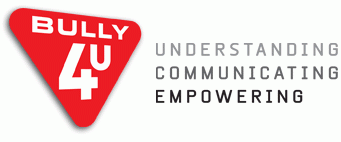One striking message that came through loud and clear during the Beyond the Hurt presentations made by Saskatchewan Roughriders Neal Hughes and Dan Clark during their visits to northern SK schools was their message about the bully.
It is a label and a hurtful one.
“We don’t want to label anyone,” Hughes told the students at Stony Rapids.
“We don’t want to label people a bully. They are showing bullying behavior, but that can change.”
Richard Kies with the Red Cross noted the focus on showing respect and understanding for the bully and their situation has grown as the program has evolved over the years.
“A lot of bullies have been bullied themselves,” Kies said. “There is a lot of labeling of bullies and we try to avoid the labels.”
Hughes himself is a walking testament to the potential that someone bullying can change their behaviour. He readily admits he was a bully at times as a kid, as well as being bullied for a period.
“I’ve been a target, I have done some bullying and I have been that person who just stood by,” Hughes said after the presentations were over.
Now he is a two-time Grey Cup champion with his hometown CFL football team who got a teaching degree at the University of Regina in 2007,
“It was a great year for me. I had a daughter, got a degree, won a Grey Cup and proposed to my wife.”
He said being a part of the program is important, in both giving back to communities that support the Riders, but also making a difference in kids’ lives.
“Bullying will always be there, but this is helping give kids the tools I didn’t have when I was younger. This helps change the culture around bullying.
For Clark, the 300-pound+ lineman who GETS PAID TO pound people into dust on the football field, his experience with bullying was being the victim, as he shared with disbelieving students.
pound people into dust on the football field, his experience with bullying was being the victim, as he shared with disbelieving students.
“It wasn’t until I went to high school and started playing football that I learned there wasn’t something wrong with me, but with the person bullying me.”
For Clark, the highlight of the trip was “seeing all the smiles, and how different it is up here.”
“We’re all people. We may come from different cultures, different religions, different backgrounds, but we all need to be open-minded to each other,” he said. “Everyone deals with bullying.”
Both players offered praise to the Red Cross for their work on the program and to Cameco for teaming up to help bring them up north.
